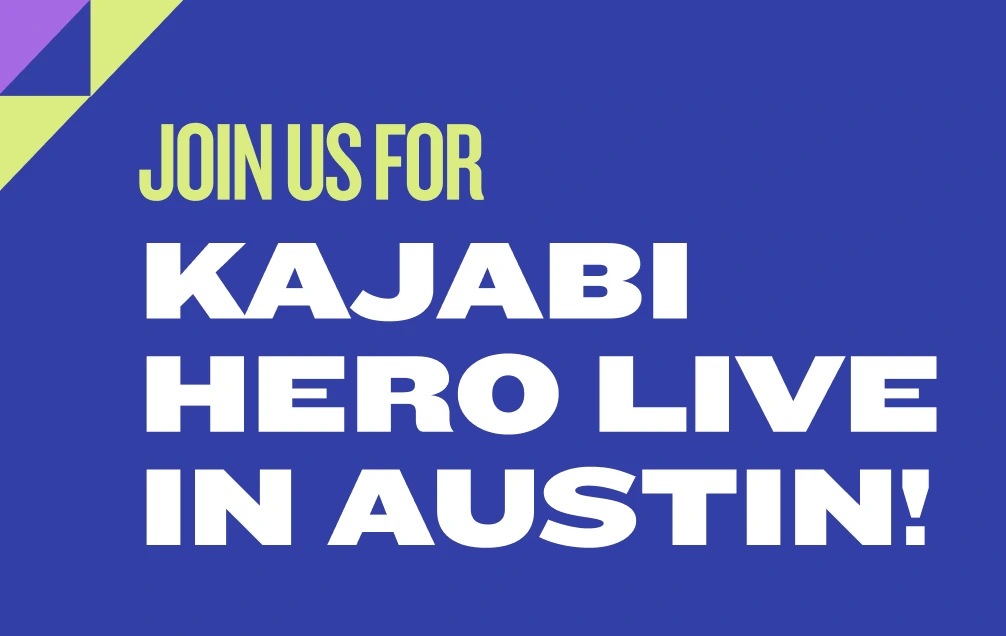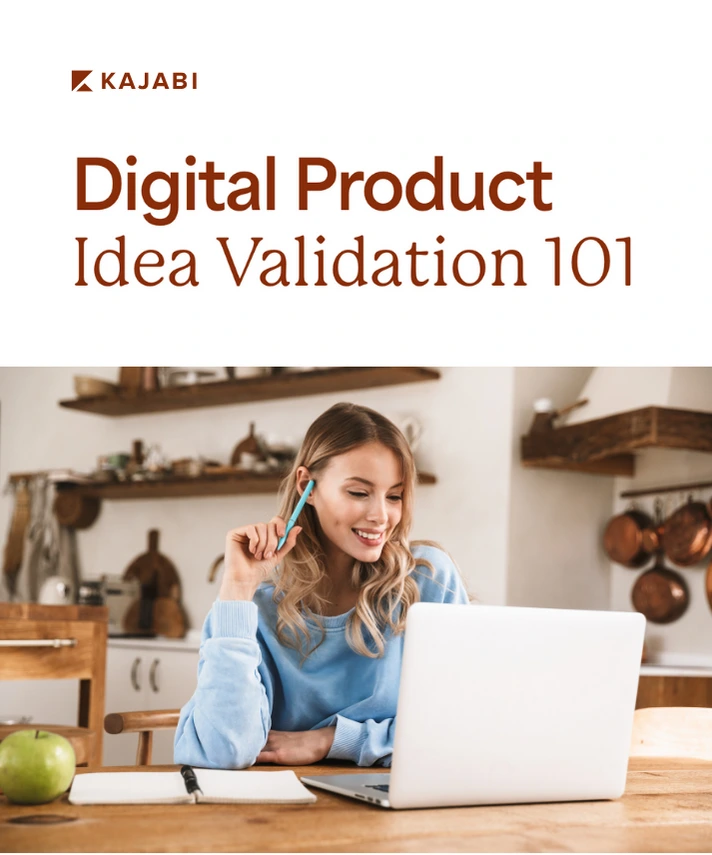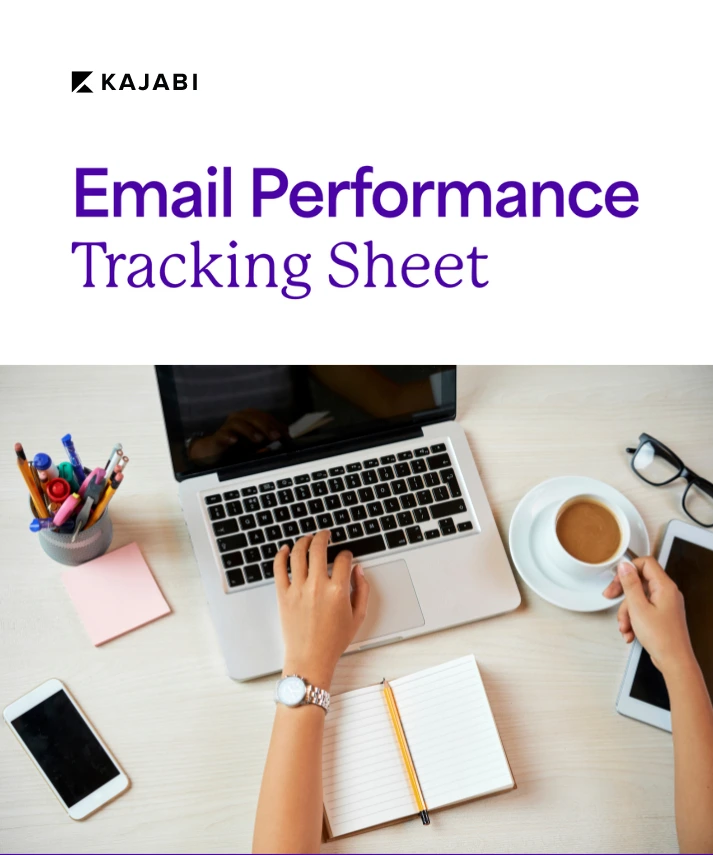
How to write good email content: 17 Tips for writing effective emails
Get free expert insights and tips to grow your knowledge business sent right to your inbox.
Email marketing can be a challenge because the average person gets more than 100 emails per day. Even worse, nearly half of those emails qualify as spam.
The best way to break through the clutter is with great emails tƒhat resonate with your audience. Read on for 17 tips for writing great emails and great email content.
Or, check out our two-minute video for a quick summary:
17 Steps to writing better email, email content
Every email is a blank slate, full of potential and possibility. It’s your opportunity to either grasp or squander.
If you want to create better email content in 2018, you need a focused strategy, and understanding of human behavior, and the willingness to try new things until you find the formula that works.
However, you don’t have to begin fresh. Learning email marketing best practices can put you ahead of the competition before you ever send your first email.
Keep in mind that even the smallest misstep can cause your prospects to unsubscribe from your mailing list. Worse, if you’re seen as too spammy, users might blacklist your email address, which could result in all your emails winding up in spam folders.
That’s the exact opposite of what you want. So let’s look at ways to make your email marketing campaign work for you instead of against you.
1. Know and write for your target market

You don’t speak to your parents the same way you speak to your kids. Similarly, you probably wouldn’t speak to someone you just met the same way you speak with somebody you’ve known for years. You should treat your emails the same way: tailor the content for your audience.
You probably already know a thing or two about your target customer already based on what you do and how you do it. You can conduct research to learn more about your target audience.
To find your target audience, spend time where they like to congregate. Participate on forums, interact with them on social media, and ask them to complete surveys. You have many other options:
- Answer questions on Quora and Yahoo! Answers.
- Attend events and hand out your business card. More importantly, talk with people to find out what they’re interested in.
- Poll your existing audience when you want to know what you should write about in your emails.
- Check out your competitors. Who is paying attention to them? How can you reach those same people?
Apply what you’ve learned to every email. Pretend your target customer is sitting across the desk from you, waiting to read what you’ve written.
2. Use clear, actionable language
Don’t mess around with your audience’s time. Use clear, actionable language to get your point across. You can also mix in some trigger words to better get their attention.
Subject + verb + clause
Let’s look at an example. Choose the sentence below that’s clear, actionable, and follows the formula:
- You can transform your life with this easy-to-follow online course.
- You might want to try this easy-to-follow online course if you want to transform your life today.
The first one is correct. Not only does it follow the subject-verb-clause formula, but it’s also shorter and easier to digest.
You can still include your brand voice and have fun. But you should respect your audience’s time by leaning on an economy of words.
3. Align your subject line and body copy
Your email subject line is your email’s promise. It tells the recipient what he or she can expect to find inside the email.
If your audience reads the email and feels betrayed by the subject line, they probably won’t open an email from you ever again. That’s why your subject line and body copy must stay in alignment.
It’s tempting to use a melodramatic subject line that you copied from a Buzzfeed headline, but resist the urge. Or at least use that technique very sparingly. You’ll build trust and loyalty if you’re honest and transparent with your readers.
Of course, that doesn’t mean you can’t punch up your subject lines to attract attention.
The best way to increase open rates is to tell your readers, in plain language, what they’ll get from the email. Also, tell them how they’ll benefit from giving you their time:
- Get a free template for improving your time management skills.
- Do you want 50% off my next course?
- Take a free copy of my new book … No strings attached!
- Learn three ways to get organized in 15 minutes or less.
Make sure every word of your body copy remains responsive to the subject line. Try not to veer off on irrelevant tangents or confuse your reader.
There are plenty of resources to help you. You can use AI writing tools to improve your email copy and subject line.
Well-aligned subjects and email bodies keep your audience engaged and interested. Your readers will sense if there’s a disconnect.
4. Personalize each email
Email clients that use personalization tokens can become your greatest tool in email marketing. A personalization token exchanges a generic word or phrase into one that’s designed specifically for the recipient.
Name tokens represent the most popular choices. Which would you rather see at the top of an email you’ve just opened:
- Dear Reader, [or]
- Dear Sheryl,
Most people would prefer the latter, as long as the name is correct. You can use other personalization tokens to further create intimacy and trust between you and your readers.
For example, you could include the recipient’s location or the name of his or her business. Just don’t go too overboard. You don’t want to transform from a savvy email marketer into a potential stalker.
5. Write in the second person
A conversational voice proves useful for any form of marketing, but especially for email. Remember that you’re sending an email directly to a person, even though your emails might reach dozens, hundreds, or even thousands of people.
Talk to the target consumer directly with each email. Instead of using “he or she,” say “you.” That gives the recipient the sense that you’re having a one-on-one conversation. This helps to make the email not sound too sales-y or contrived.
You can also include first-person references to make the content more intimate. Instead of just talking “at” the reader, talk “to” the reader by sharing your own experiences.
Shifting between first and second person won’t jar the reader. But, if you suddenly switch to third person, you might lose your prospects.
6. Establish relevancy right away
You’re passionate about your products. You might feel tempted to go on and on in your emails about your subject area and your knowledge.
Resist that urge.
Instead, establish the email’s relevancy right away. It should be obvious what you’re trying to convey from the subject line, as well as from the first line of the email body.
This doesn’t mean that you have to send emails that contain just a few sentences. You can write longer-form content, but only if you get your reader’s attention from the first line.
For example, let’s say you’re sending a free copy of a white paper you’ve written. Mention the white paper download in the subject line and in the first sentence. Then write any other copy you feel might prove relevant to the reader.
Add the download link for the white paper early in the copy and at the bottom of the email.
7. Prioritize clarity
Everyone wants to write catchy prose. Clarity must come first.
If your readers don’t understand why you’re sending your email, they’ll hit the “delete” button and move on to something else. Don’t squander your time on pithy puns and wry witticisms.
Each email you send should have a specific purpose:
- Announce a new online course
- Educate your audience about a tip or fact
- Encourage people to share your content
- Get your readers involved with you on social media
Once you pick a goal for the email, make sure every sentence, image, and link furthers that goal. Don’t allow yourself to stray off-topic even if you think of something funny or entertaining to share.
You can make your copy as catchy as you want as long as it sticks to the email’s purpose.
8. Don’t sell before the prospect is ready

Have you ever bought a new car at a dealership?
The salesperson typically greets you the second you get out of your car. Then you exchange pleasantries, talk about the weather, and discuss what you’re looking for in a new vehicle.
You’re invited to look at some of the cars on the lot. The salesperson asks you about your job, your favorite hobbies, or the local sports team.
It’s all about priming the customer. Good salespeople know that consumers need a little wooing before they’re ready for a sales pitch. You can apply this wisdom to email marketing.
If you start an email with, “Dear Reader, Please buy my product,” you’ll probably wind up without a customer. Don’t ask for the sale until the prospect is ready.
What does this mean?
In email marketing, you need to give to get. In other words, if you share something of value with your readers, they might share the contents of their wallets in exchange.
That’s why your link to your sales page or to your social media handles should come after you offer something of value. This could be a free e-book, a discount code, useful content or more.
9. Give prospects a reward for reading
Your customers expect—and respect—rewards.
We mentioned above that you don’t want to give your sales pitch until you’ve primed your audience, and that you must give if you want to get. The reward is the giving part.
Each email should offer something of value, whether it’s information, education, entertainment, a freebie, or a special coupon or promotion. Choose your rewards based on the email’s content and your current marketing campaign.
10. Talk about benefits, not features
Lots of entrepreneurs confused benefits with features, and vice versa. It’s not surprising given that they’re close to their businesses, so they’re unable to view them objectively.
To give you an example, imagine that you’re selling an online course titled “How to Lose 15 Pounds Safely.”
The features list might look like this:
- 10 15-minute videos filled with tips and strategies
- A weight-loss journal for tracking pounds lost
- 6 quizzes that test your knowledge
- Q&A sessions with the instructor
- 200 pages of original content
These are features, not benefits. You can turn them into benefits like this:
- Gain access to 150 minutes of video that will teach you how to shed pounds step by step.
- Record your weight-loss progress in a personalized journal designed just for you.
- Take regular quizzes to make sure you’re absorbing what you’ve learned and applying it correctly.
- Participate in live Q&A sessions so you can clarify things you don’t understand and learn from other customers.
- Get 200 pages of original content that will teach you how to maximize every second of your exercise routine while helping you to eat healthy without starving yourself.
Do you see the difference?
Features just communicate what a customer will receive. Benefits tell a customer how he or she will gain value from those features.
Focus on benefits instead of features in your email marketing campaigns. Put yourself in the customer’s shoes and imagine what he or she would want to gain from your online course.
11. Show what readers will miss
You’ve probably heard about FOMO—the first of missing out—as a popular social media meme. While it’s often used tongue-in-cheek, there’s some value in the phrases.
People don’t like to miss out on things that might benefit them. It’s like learning about a sale at your favorite store after it’s already ended.
You can use FOMO in an email marketing campaign to encourage subscribers to both open and read your messages.Make those opportunities clear to boost conversion rates and increase sales.
12. Be brief
Let’s face it: We’re all busy. You must consider that fact when you’re marketing to prospects.
If you’re brief in your correspondence, your prospective customer will appreciate that brevity. They’ll know you don’t want to waste their time.
You can practice word economy to get your message across in fewer words. There are several other strategies you can try to make brevity your top priority.
- Stick to one idea. Email marketing is a long game, so don’t feel like you have to tell your prospects everything in one message.
- Cut and prune. Either learn to edit your own work or hire a ruthless editor. Don’t be afraid to kill your darlings — metaphorically, of course.
- Nix purple prose. Big words and fancy phrases might sound great to your ear, but they irritate your prospects. Watch for needless adjectives and other parts of speech.
Many of your email subscribers might stay with you for months or even years. You have plenty of time to deliver the information you want them to know. Keep each individual email as brief as possible.
13. Present a clear deadline

Every email should include a call-to-action, or CTA. The CTA tells your customer what you want them to do next.
- Follow you on social media
- Sign up for one of your online courses
- Visit your sales page
- Watch a YouTube video
Your CTA can present a special promotion that encourages prospects to become customers. You might offer a bundle deal for two or three of your courses or a 20-percent-off coupon.
If you decide to go with a promotion for your CTA, make it time-sensitive. Your prospect is out of luck if they don’t take advantage of it by the deadline.
It’s called urgency and it’s one of the sharpest tools in your marketing arsenal.
14. Insert multiple links
Although you want your emails to contain clear and compelling CTAs, you can give your customers other ways to engage with your company. Scatter several links throughout your email content.
You can link to blog posts, YouTube videos, social media accounts, and any other web properties. You’re steering your prospects down the sales funnel. Your prospective customers might need to interact with your brand several times before they actually plunk down their money for your digital products.
You’re also providing more value when you insert links. Let your prospects know where they can go to find valuable information. Just remember to steer them toward your content and not someone else’s.
If you link to something that has nothing to do with the link’s anchor text, your prospects will feel deceived. For instance, don’t tell your subscribers that you’re linking to a freebie and then send them to a page that requires them to do something else to get the freebie. Keep your language honest and open.
15. Craft a can’t-miss call to action
We’re back to the infamous CTAs. It’s important to continue to discuss this component of your email marketing campaign because it’s often the most critical for success.
At its most basic, you’re asking for a click. Nothing more. You do hope that your prospect does more than that.
Let’s say you ask your customers to sign up for your latest online course. You’ve spent your email extolling the benefits (not features!) of your course, and now you’re ready to launch your pitch.
The success of that pitch depends on several factors:
- Wording: Keep it clean and concise. Don’t beg or plead for the click. Just ask for it.
- Design: Make your CTA stand out. Put it on a button so it looks clickable. Use a different font. Format it in a different color.
- Content: A compelling CTA includes some reference to the potential benefits. Don’t just say “click here.” Tell your audience why they should click.
After your prospect clicks, they might actually sign up for the course.
16. Harness the power of the P.S.
The good old P.S. didn’t die with the chain letters. They’re still in full swing, and for good reason: They work.
A P.S. calls attention to itself because it exists outside the rest of the email. You’ve already finished up the email, delivered your CTA, and given your salutation.
But there’s more.
This is your opportunity to capitalize on the readers who didn’t respond to your CTA. You can use as many P.S.s as you want. Just add an extra P with each line.
17. Encourage Subscribers to Share
The goal of creating an email marketing campaign is to expand your reach. If you want to grow your subscriber list, start with the people you’re already reaching: Your subscribers.
In every email you send, let your subscribers know that they’re welcome to share your content with others. Tell them to forward your emails to their friends and family members who might find your content interesting.
They might share and they might not, but it never hurts to ask.
While you’re at it, include social share buttons. If your subscribers reference your email campaign on Twitter or include a link to your website on Facebook, you’ll gain instant exposure.
Create your email campaign using kajabi

You don’t need any fancy software to create an email campaign. In fact, you can start your email marketing directly in Kajabi.
Once you’re collecting emails and sending regular correspondence, you can expect course sales to increase. But first, you have to start the campaign.
First, create a custom form with a lead magnet that allows prospects to sign up for your email list. Remember that email marketing is a form of permission marketing. Don’t buy lists or obtain them unethically. Let people sign up of their own volition.
Next, create an email series. Drip campaigns work particularly well when you sell online courses because they build on one another. You create a relationship with your subscribers that eventually — if all goes well — culminates in a sale.
Write the emails in your drip campaign first so they’re ready to go as soon as you start to get subscribers.
You can then send emails using Kajabi’s built-in email broadcast feature or integrate your third-party email service with Kajabi’s software. Either way, you’ll find yourself well on your way to email marketing success.
Email marketing can quickly launch your online courses to success and result in more conversions. However, you only get to enjoy those benefits if you write good email content that your prospects want to read.
Keep your content brief, compelling, and on-topic. Resist the urge to go off on tangents or to apply the hard sell. You’re in it for the long haul — not the quick ROI.
More importantly, build relationships with your readers. Let them know that you sympathize with their pain points, that you understand the problems they face, and that you ultimately want to help them succeed.
That’s what makes an email marketing campaign special.
After you create a course on Kajabi, you can use email marketing as well as other tools to spread your brand and gain more visibility. The more you market your products, the greater your rewards become.
Find more blog posts by category:
Create Your Product
Build Your Business
Grow Your Business
Kajabi News
Self-Made




.jpeg)








